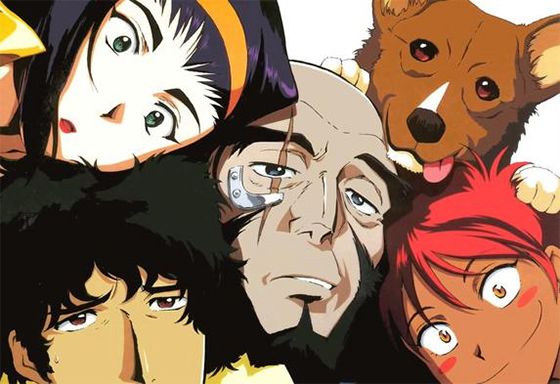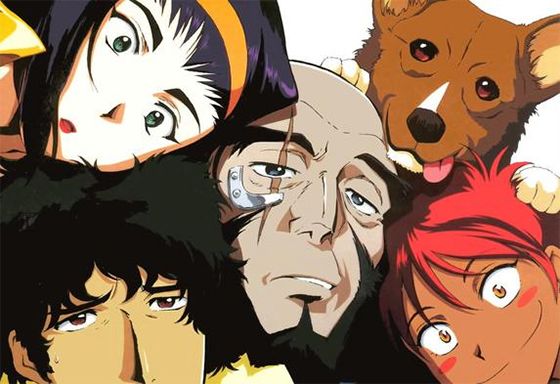Netflix’s “Cowboy Bebop”: An Unwatchable Remake
Managing Arts and Living Editor Alex Brandfonbrener '23 compares Netflix's live action remake of "Cowboy Bebop" to the original anime show. Despite similarities to the original, the remake is so disappointing that he couldn't even make it through the first scene.


On Nov. 19, 2021, Netflix released its live-action adaptation of “Cowboy Bebop,” a beloved sci-fi anime show from Japanese animation studio Sunrise. As a longtime fan of the original, I was eager yet hesitant to watch. Other live-action remakes of anime series, like 2017’s “Ghost in the Shell” starring Scarlet Johansson, have wildly disappointed expectant fans. So when I sat down this January to watch the remake of “Cowboy Bebop,” it was not a huge surprise to me that the show was unwatchable. It was so bad that I couldn’t even make it through the first scene.
I can see why Netflix decided to adapt “Cowboy Bebop” beyond the original. The premise is enticing, even if you’re not an anime fan: in the year 2071, a cheeky gang hitman-turned bounty hunter named Spike searches for work and cash. He flies around in snazzy spaceships, all while a jazzy soundtrack whizzes through saxophone solos — the titular “bebop.” And I want to applaud Netflix for making efforts to stay true to the original: they recreated the original’s signature opening sequence, shot for shot.
Even that opening scene of the remake — the one I couldn’t get through — is a word-for-word copy of a scene from the movie adaptation of the original. But though the dialogue is the same, the two scenes couldn’t be more different. They demonstrate what I loved about the original, what I hated about the remake, and how these two visions of “Cowboy Bebop” are fundamentally opposites of each other.
Here’s the setup: a robbery is in progress. The leader of the heist recently lost his job at a tech giant. Using his insights into the company, he plans to steal from the corporation that fired him. In the original, the setting is a convenience store, one owned by that tech giant. In the remake, it’s some sort of casino. The difference in location is crucial. Spike ambles into the room with earbuds in. The robbers are aghast. Is he an undercover cop, or just some unlucky civilian? In actuality, he’s there to collect the robbers’ bounties. The remake doesn’t explain how and why a random man could stumble into this weird casino space. But in the original, it makes perfect sense: he’s just out to buy a cigarette.
Eventually, his farce is blown, and a gunfight ensues. In the remake, it’s your typical fight scene. The good guys take the bad guys by surprise, raining bullets on them all at once. Once again, the original is completely different, creatively juxtaposing the violent action and ordinary setting. Spike barely avoids whizzing shots by hiding behind the aisles in the store. He surprises the boss with a party popper and knocks him into a coffee machine, which dribbles scalding coffee onto his face. Later, a different robber takes an old woman hostage and holds a gun to her head. Spike responds: “Sorry, lady. We don’t protect or serve. This is business.” By startling the robber, he manages to get a clean shot in, saving the woman.
The remake omits the hostage moment altogether. Instead, the scene ends with some quippy lines and a flashy sequence: one of the robbers uses a laser cannon to blast a hole in the wall, exposing the vacuum of space. It was a spaceship all along.
This is another key difference between the two versions. The original features its sci-fi elements carefully, sparingly, and beautifully. Long shots of stars and space fill each episode, providing time for reflection. Just like the bare, empty desert in a western, space is a canvas for the lonely contemplations of the “cowboy” protagonist.
An undeniable similarity of the remake to the original is the soundtrack, jazzy and upbeat. I can’t fault Netflix in this regard, because they hired the same composer as the original, Yoko Kanno, and featured tracks from the original. But I don’t need a new version of “Cowboy Bebop” to appreciate, or even get more out of, the original’s music. It’s blaringly fast and tauntingly playful, though at times mournful. The Seatbelts, a band Kanno formed specifically for the soundtrack of “Cowboy Bebop,” features Japanese singer Mai Yamane (I strongly recommend her 1980 album, “Tasogare”) alongside a talented set of blues musicians. It’s the highlight of the original for many fans, so much so that The Seatbelts recently reunited for a charity concert benefiting the CDC Foundation and Doctors without Borders in support of the fight against Covid.
Beyond this simple message — don’t watch the remake; watch the original — I believe that the first “Cowboy Bebop” is a great anime show for someone who isn’t familiar with the genre. While many anime series skim over the implications of their violence, “Cowboy Bebop” rests on it at length. There are no lasers or magic spells, only guns. It’s only people shooting people, and those caught in between. Even those who seek bloodshed are victims of systemic forces. By questioning its own violence, painting it as unjust even when the protagonist wields it, “Cowboy Bebop” is an answer to modern media’s numbness to violence. If only Netflix could have brought that to life again…





Comments ()